The West is in the grips of another hot, dry summer, with more than 60 large wildfires currently burning across the region. At the same time, the effects of last year’s fires are apparent in many states; Interstate 70, a major artery for east-west transportation, has been shut down through Colorado’s Glenwood Canyon multiple times in the past two months due to mudslides resulting from last year’s Grizzly Creek fire. The epicenter of the ongoing drought is the Colorado River Basin. Stretching along the spine of the Rocky Mountains, across the Colorado Plateau, and within the Sonoran and Mojave deserts, the Colorado River Basin has experienced ongoing declines in stream flows, record-setting heat, some of the driest years ever recorded, and previously unimaginable catastrophic fires.
But there are opportunities for addressing these challenges posed by climate change.
A look at TU’s work to address climate change
In the Price River watershed, a tributary to the Green River located in central Utah in the Colorado River Basin, TU’s Jordan Nielson is partnering on a restoration project that helps agricultural producers, fish and wildlife, and the environment mitigate and adapt to the ongoing drought and the effects of wildfires.
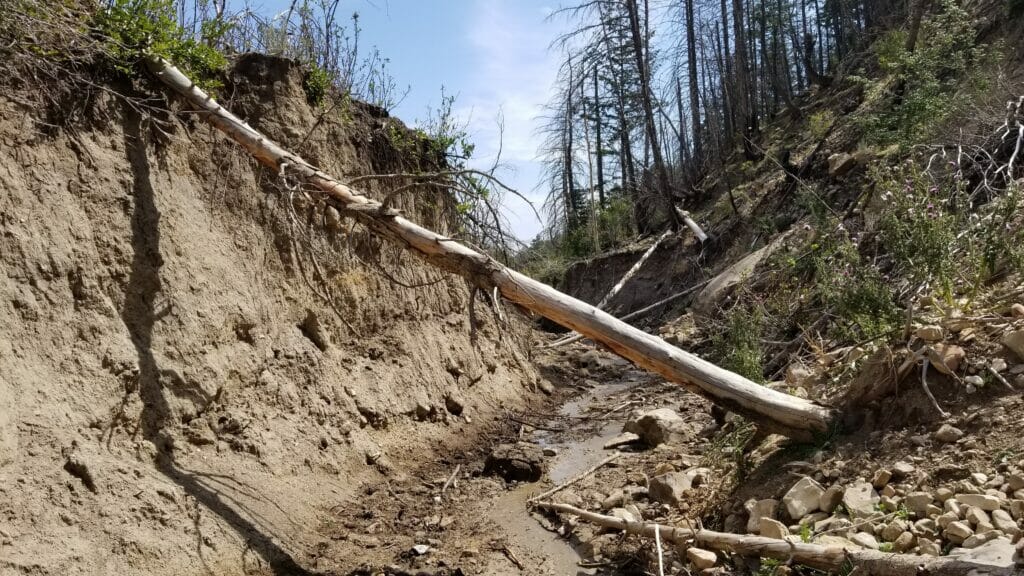
In the summer of 2012, the Seeley Fire burned the upper reaches of Miller Creek, a tributary to the Price River. The loss of vegetation that, when present, slows the flow of water over the ground and allows for infiltration into the ground caused an increase in flood events. These floods, with their high-velocity flows, caused Miller Creek to deeply incise its channel; the extreme erosion of the streambed deposited high amounts of sediment into the creek, resulting in poor water quality and the degradation of riparian habitat.
In an effort to combat the channel incision, water quality and habitat issues, TU—along with the Utah Division of Wildlife Resources, the U.S. Fish and Wildlife Service, the Wild Utah Project, and the National Wild Turkey Federation, with funding from Utah’s Watershed Restoration Initiative—began constructing beaver dam analogues (BDAs) in 2016. These structures, composed of natural materials including logs and branches, slow the speed of the creek’s flow and trap sediment. Over time, BDAs help rebuild the stream channel to its original elevation and reconnect the creek to its floodplain. They also help increase habitat complexity, a feature that allowed for the reintroduction speckled dace in early July and the planned reintroduction of Colorado River cutthroat trout to Miller Creek in fall 2021.
The restoration work in Miller Creek helps combat the detrimental effects of the Seeley Fire by dramatically decreasing the flash floods and water quality issues that follow the kinds of large wildfires we’re seeing throughout the West.
In addition, the restored riparian area resulting from BDA construction creates a natural fire break because these areas have more saturated soils and green vegetation than degraded streams, with the potential to slow or stop large burns in the future. Restoring riparian habitat and reconnecting Miller Creek to its historic floodplain has additional potential benefits beyond those connected to wildfires: water storage in shallow aquifers, temperature mediation that provides cooler water later in the season for aquatic species, and increased late-season flows when streams usually run low or even dry—all of which help mitigate and combat the hotter, drier summers that come with a changing climate.
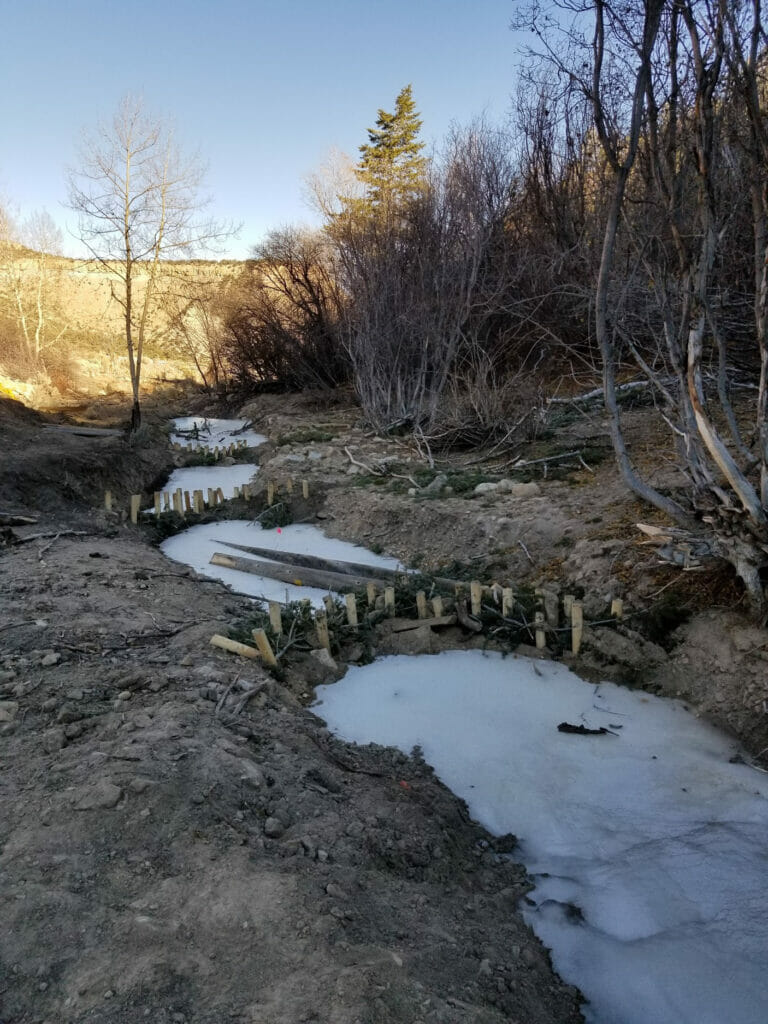
While climate change seems like an impossibly huge crisis to overcome, these kinds of projects that TU undertakes provide useful and useable strategies for facing the challenges of climate change in the twenty-first-century West in ways that are beneficial to people and the natural world.
New report outlines climate resilience strategies
A new report, Ten Strategies for Climate Resilience in the Colorado River Basin, released today, provides a counter narrative to the usual doom-and-gloom climate stories in the Basin by showcasing efforts that can help adapt to change, reduce pressure on water supplies, mitigate carbon emissions, and strengthen local economies. This report was authored by Martin & McCoy and Culp & Kelly, LLP, on behalf of American Rivers; Environmental Defense Fund; National Audubon Society; The Nature Conservancy; Theodore Roosevelt Conservation Partnership; Trout Unlimited; and Western Resource Advocates.
The authors gratefully acknowledge the extremely helpful information and input from these organizations in developing and preparing this report. All opinions and errors are the responsibility of the authors. The ten strategies outlined in this report, which include projects like Miller Creek’s restoration, are an approach to strengthen economic, social, and political connections across the Basin in support of greater climate resilience.
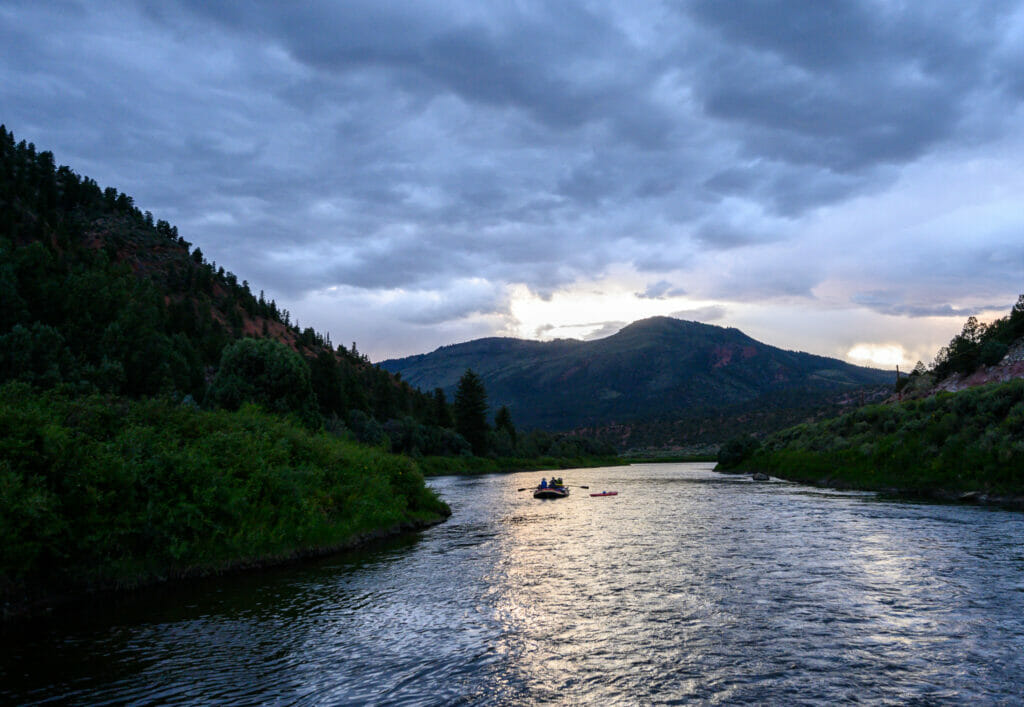
The scale and pace of climate-related changes in the Colorado River Basin pose an increasing risk to the reliability of water supplies that support humans and the environment. Water conservation efforts have often focused on addressing the “water budget” problem (e.g. balancing supply and demand). While these efforts are essential, they are not enough to deal with the broad risks our communities face from changing climate dynamics. New approaches are needed to help our communities directly and holistically adapt to, respond to, and mitigate the steady, compounding, and extreme risks of climate change to economies, communities, landscapes, and the water resources that support them.
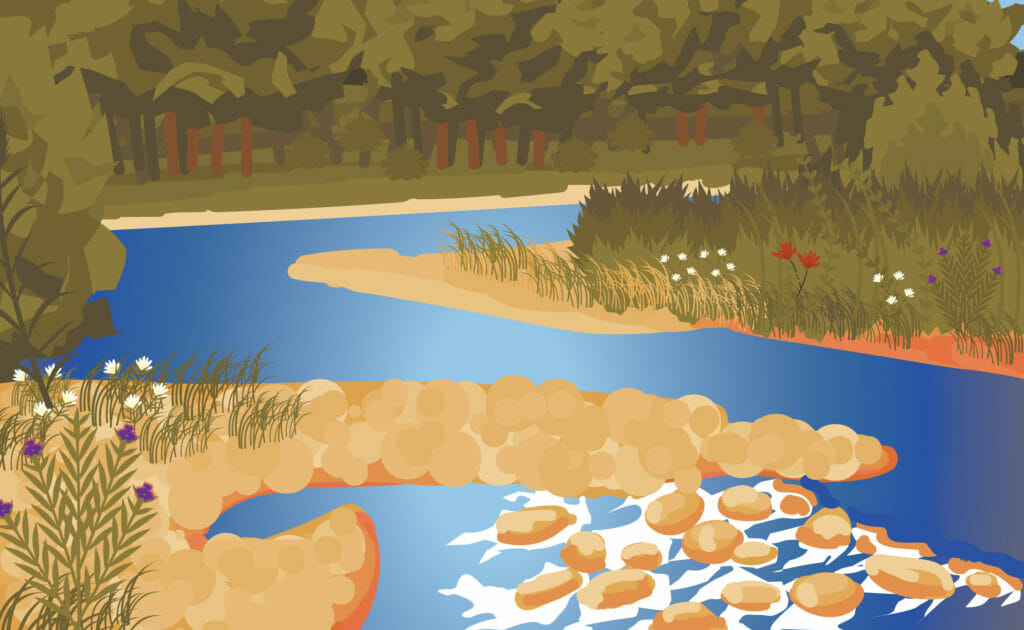
This report examines 10 strategies for the Colorado River Basin that have the potential to address two or more critical resilience questions:
- Could the strategy help the Basin adapt to on-going climate shifts?
- To what extent would the strategy reduce pressure on existing water supplies?
- Would the strategy help mitigate climate change?
- Could the strategy strengthen economic resilience in communities?
The 10 strategies included in the report range from the well-demonstrated, to the emerging, to theoretical but largely untested concepts, as illustrated in this figure. These strategies were selected because they are reasonably feasible to implement and can meaningfully contribute to climate resilience outcomes. And they have generally been raised by a variety of stakeholders and governmental entities throughout the Basin over the last few years.
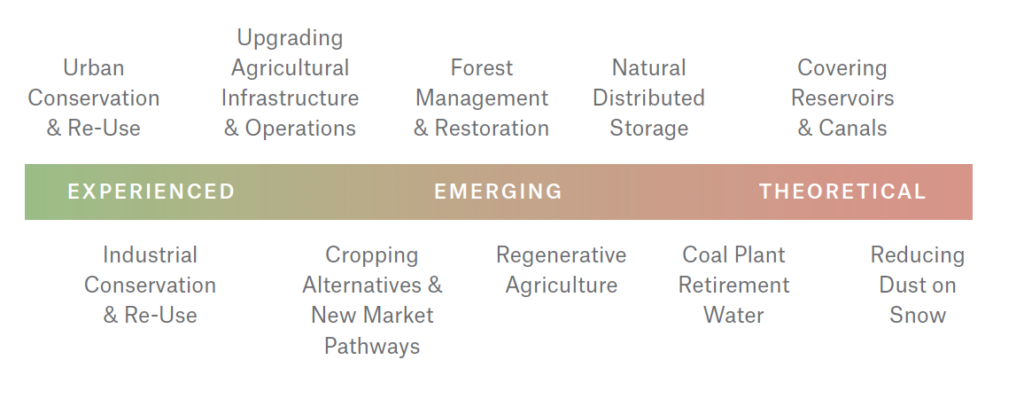
In summary, the 10 investment strategies are:
- Forest Management amd Restoration: Prioritizing forest management and restoration to maintain system functionality and biodiversity
- Natural Distributed Storage: Restoring highly degraded natural meadow systems to improve local aquifer recharge, water retention, reconnect historic floodplains, and support productive meadows and riparian ecosystems
- Regenerative Agriculture: Promoting voluntary farming and ranching principles and practices that enrich soils, enhance biodiversity, restore watershed health, and improve overall ecosystem function and community health
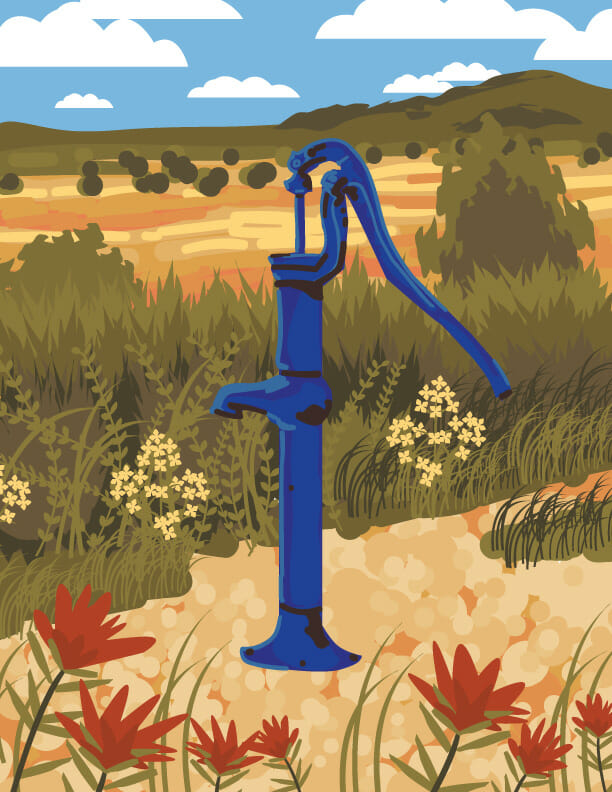
- Upgrading Agricultural Infrastructure and Operations: Upgrading diversion, delivery and on-farm infrastructure and operations, including irrigation systems
- Cropping Alternatives and New Market Pathways: Developing on-farm operational shifts and market and supply chain interventions to incentivize water conservation, e.g. shifting to lower water-use crops
- Urban Conservation and Re-Use: Incentivizing conservation technologies, indoor and outdoor conservation programs, and direct and indirect potable reuse
- Industrial Conservation and Re-Use: Incentivizing modifications and upgrades to reduce water use and increase energy efficiencies
- Coal Plant Retirement Water: Purchasing or reallocating water rights from closed or retiring coal plants to be used for system or environmental benefits, or other uses
- Reducing Dust on Snow: Improving land management practices to reduce the dust on snow effect—which controls the pace of spring snowmelt that feeds the headwaters of the Colorado River.
- Covering Reservoirs and Canals – Implementing solutions to reduce evaporation from reservoirs and conveyance systems
This report explores the near-term next steps to moving the 10 investment strategies forward, including demonstration projects and investments, supportive financing, and action-oriented research that monitors and tracks project implementation and outcomes. As on-the-ground projects and implementation experience continue to inform how the strategies can provide cost-effective and meaningful results, developing cross-sector partnerships and basin-wide funding for such investments will be necessary to implement the strategies at a scale commensurate to the challenge.
Here are some actionable next steps for getting the strategies laid out in the report on the ground in places like Miller Creek:
- Investment is needed now in these measures. The strategies will take time to implement and to see the benefits. Investment now will be needed to get ahead of the tangible effects of climate shifts.
- Local, state, and tribal governments must be involved. These measures won’t work if local, state, and tribal governments are not actively involved and invested. The funding allocation and decision process must involve these entities in determining how and where investments are made.
- When it comes to private lands, these are voluntary measures, not mandates.
- For agriculture, some of these changes may be challenging, but they are intended to preserve the viability of agriculture into the future. This year has shown what the future could look like with business-as-usual—there have been a lot of acres fallowed and it’s been hard to keep operations financially viable.
- There are many opportunities on federal lands, because there is so much federal land within the Basin. But coordinated action among different agencies will be needed to make that a reality at scale.
- It’s a large basin and there are a lot of potential measures that could be implemented as part of these strategies. Priorities must be set, and soon. How those priorities get set will have to weigh science, costs and stakeholder willingness.
Conclusion
The 10 strategies laid out in this report provide a path forward for building climate resiliency in the Colorado River Basin through projects like the Miller Creek restoration work and many other innovative avenues. While climate change can seem like an insurmountable challenge, it is clear that there are tangible, actionable ways for adapting to change, reducing pressure on water supplies, mitigating carbon emissions, and strengthening local economies.



